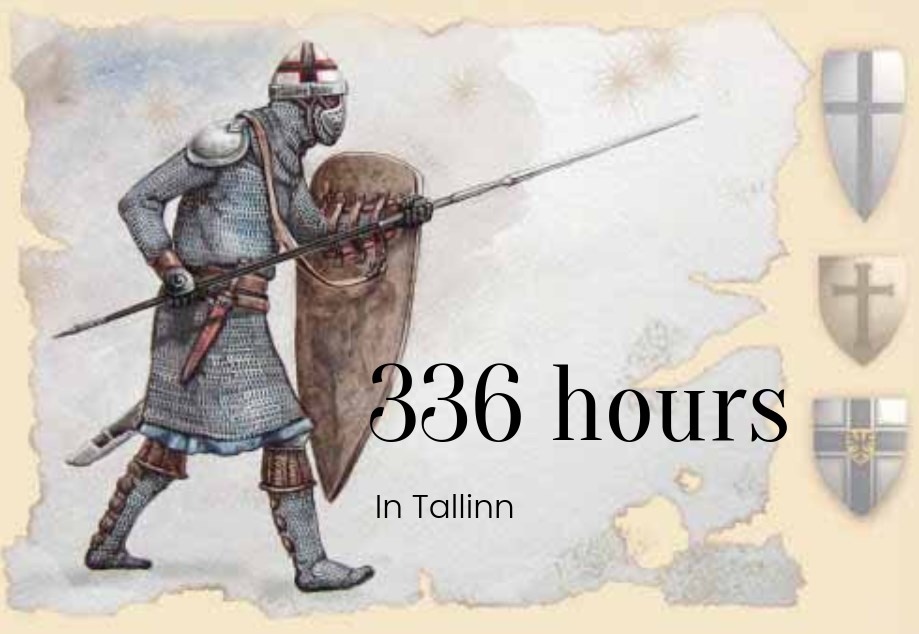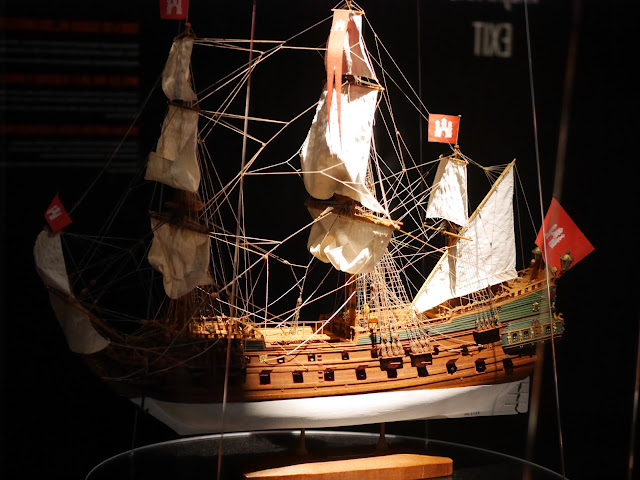Hell on the Baltic Sea
The Seaplane Harbor Museum, burdened by a name that doesn't begin to describe its scope, is the last word on Estonia's maritime history. [Editor's note: This is an audaciously ignorant claim given there is the Estonian Maritime Museum inside Fat Margaret.] The Seaplane museum opened just 10 years ago, and the fact it exists at all is an engineering miracle. The building is a former seaplane hangar with three concrete domes that are only 3 inches thick. It has no support pillars.
Like a carnival funhouse, the museum amuses and surprises. But things get terrifying in the Juminda exhibit, as if a floor had tilted too much, or a hall of mirrors had shattered before your eyes.
I had never heard of the Juminda mine battle of August 1941, and now I lie awake at night thinking about it. The World War II narrative I was taught is fraying. Has there ever been another naval battle with 15,000 deaths?
Wait, the Finns took part in this slaughter?
Today, Finland and Estonia are besties. I am shook.
Estonia's Soviet occupiers were on the run in late August as the Nazis encircled Tallinn. On a single day, more than 200 vessels holding 42,000 people set off from Tallinn for Kronstadt, a Russian naval base on an island near St. Petersburg. Among them were 10,000 Estonians, many of them forcibly enlisted, as well as just about every Estonian Jew who could get aboard. They had no illusions about the Nazis' intentions.
But a minefield laid by German and Finnish naval forces off the Juminda peninsula just east of here awaited the convoy, and German Messerschmitt fighters and Junkers bombers attacked from the sky.
Bombs from below, bombs from above. It was a turkey shoot. Fifteen thousand. The steamer Ella, with 700 people aboard, went down first. People on shore could hear the screams of its victims, some kept afloat only by inflated bicycle inner tubes wrapped around their chests.
Many of us have never heard of the Juminda mine battle because the Soviets never talked about their defeat ― their Dunkirk ― and because there are few surviving witnesses of the evacuation. It's an important exhibit, and one that's told primarily through archival footage and the words of those who survived the mine-laden gantlet.
While the Juminda horrors are the thematic heart of the Seaplane Harbor Museum, its visual anchor is the Lembit submarine, once the pride of the Estonian navy. After the Russian annexation of Estonia, it became part of the Soviet navy's Red Banner Baltic Fleet. It badly damaged a German-flagged Finnish transport ship in 1942 and was itself seriously damaged by depth charges in the Finnish-German counterattack.
I am not setting foot in that boat with a bunch of unmasked schoolkids, so here is a video of its interior if you're interested.
Among the museum's other holdings:
The oldest preserved vessel of Estonian origin, the Maasilinna, built by local shipwrights on the island of Saaremaa in the 1500s and raised by an underwater archaeology club in 1985.
An easy-to-assemble children's ice yacht.
The haabjas (dugout), whose hull is hewn from a single tree trunk that is then softened by fire and hot water to be shaped into its final form. These have been navigating inland waters for 5,000 years.
The eistuk (foreground), used for coastal net fishing and winter seal hunting.
A pricey Finnish motorboat from the 1930s, made of pine and oak with a Swedish Archimedes motor. It was in the possession of Tartu resident Gunnar Sillard, who hid it under hay in a barn to keep the Soviets from finding it.
A large collection of model ships, slowly rotating behind glass, including this reproduction of the warship Wapen Von Hamburg.
There is also a lot of anti-aircraft weaponry aimed at swooping fighters superimposed on the ceiling, and a simulator that lets you test your skill in battle. And lots of buoys (border buoys, ice-resistant buoys, explosive buoys!) and undersea mines.
Buried in a tap-button menu is a list of Estonia's current military assets: 122 mm and 155 mm howitzers, 90 mm and 106.7 mm recoilless anti-tank guns, MAPATS and MILAN anti-tank systems, the MISTRAL anti-aircraft system and Sisu XA-180 armored personnel carriers.
Tellingly, the entry concludes: "What matters most is that now we are members of NATO, the world's most powerful defence organization," a point Estonia's nervy prime minister never fails to mention when talking to the foreign press.
Moored in the Seaplane Harbor is the hundred-year-old Suur Toll icebreaker, which, like the Lembit submarine, survived the evacuation from Tallinn.
You can climb aboard if you've paid admission to the museum. Nobody checked my ticket, and indeed it seemed like I was the only person there. This is only my second full day in Tallinn, but my sense is that there are only 300 tourists here, and with the cruise-ship season not beginning till May, we have this tiny Baltic capital to ourselves.
I visited the tweendeck (below), the crews' rooms, the officers' messroom, the scullery, the workshop with the metalworking lathe for making repairs even while at sea, and honestly, I couldn't wait to disembark. The ocean freaks me out, never more so than today.













